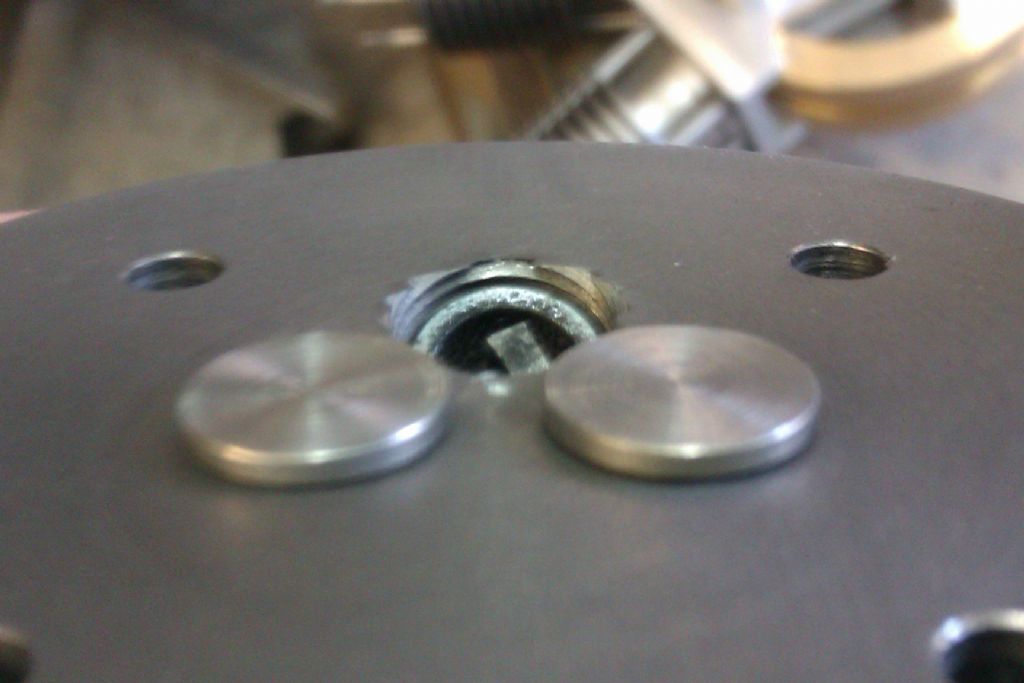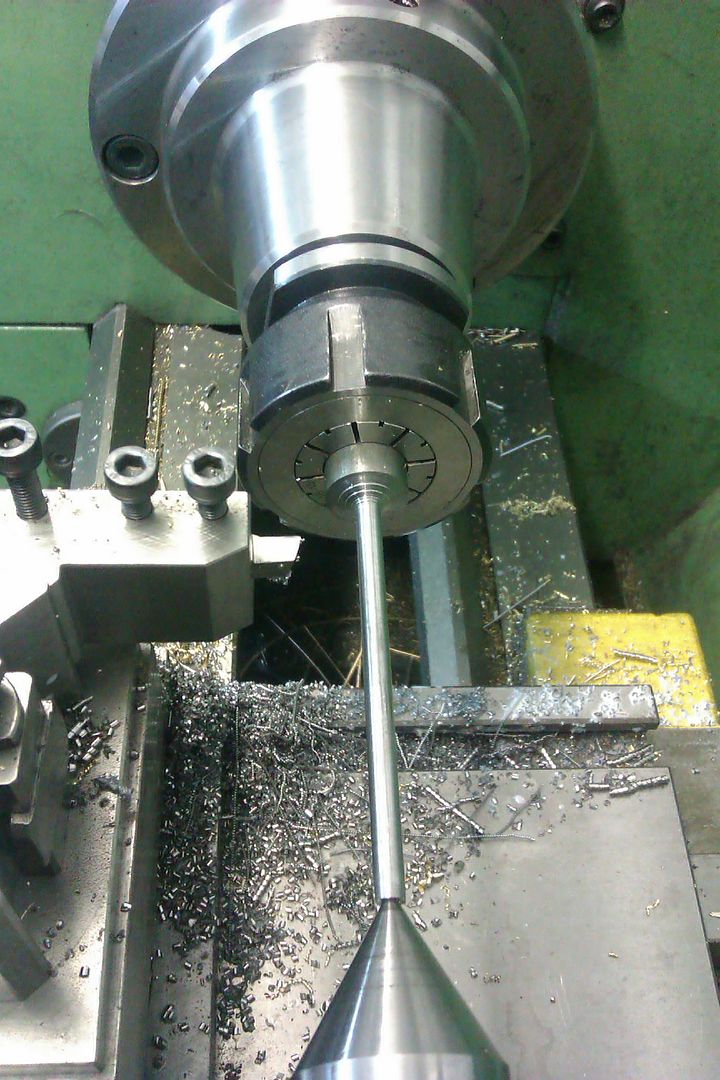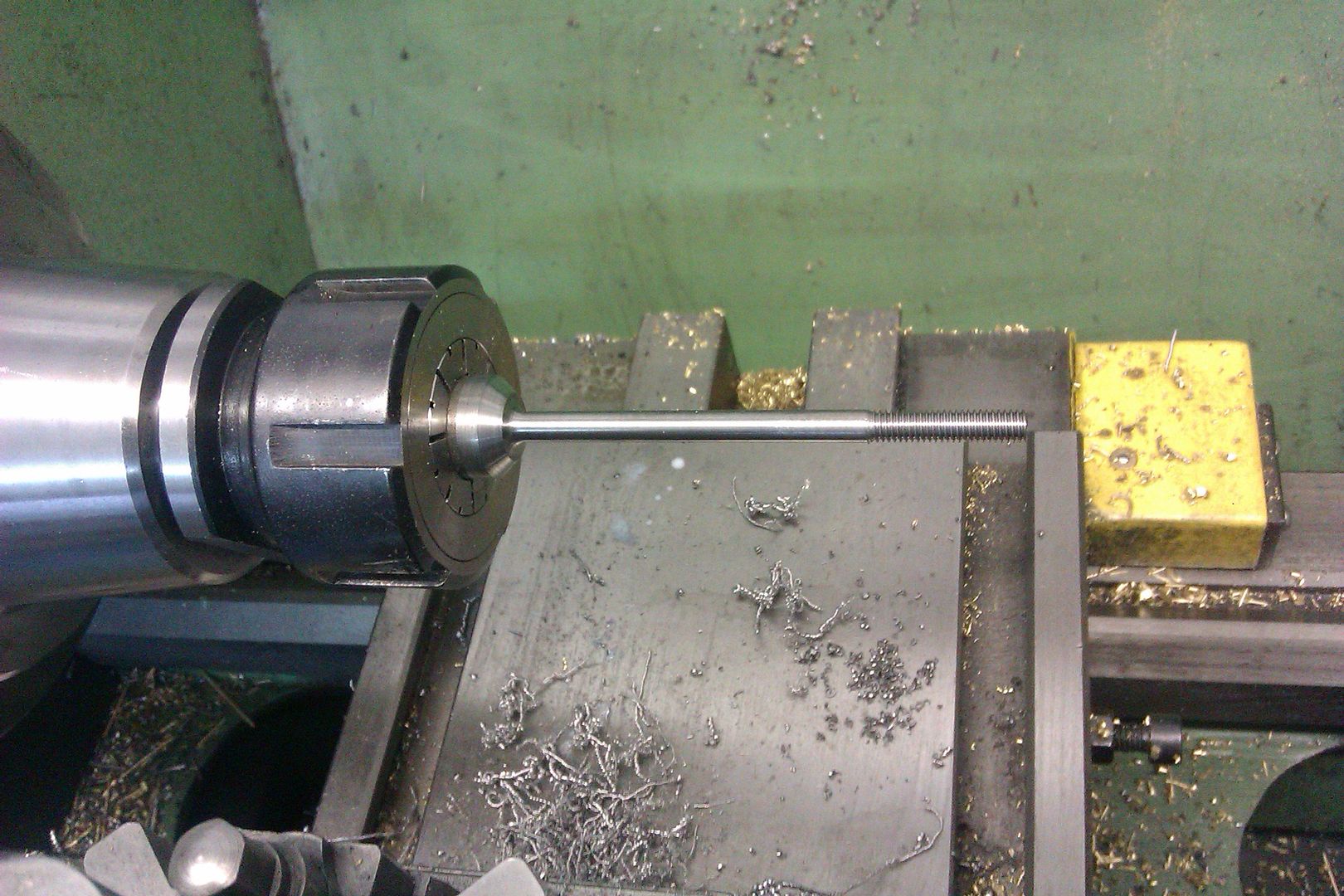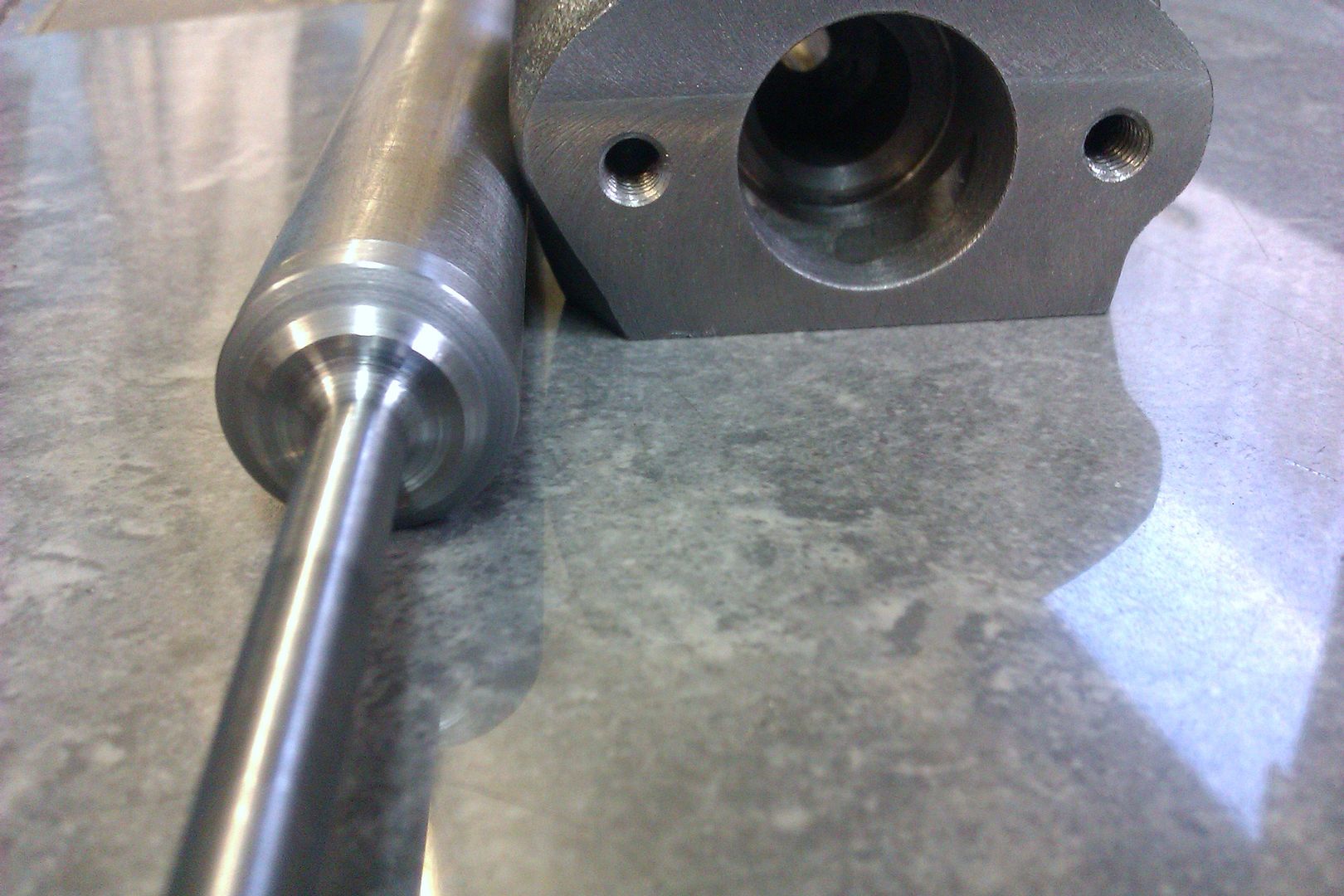.
After making the jig I have made a start upon the cylinder heads.
The 2 blanks were faced off to the required length in the lathe then over to the mill where I used an edge finder to get the best centre of the cast iron stock. The DRO was then used with a spotting drill for marking out the holes.

These holes will be the ref point for fitting to the jig for all the other machining stages to the heads.

The jig was then fitted into a 4 jaw and dialed in true. The head blank was then fitted to the jig for machining the sides to a 2 1/2 in dia.


Then to check they fitted.! 



The jig and the blanks will be made friendly again upon the mill for the several hole drilling sessions of the inlet / exhaust and spark plug threaded hole. All hopefully  at the correct angles.
at the correct angles.
I must also remember to make one head a left sided one and the other a right as they are not interchangeable. This being due to the inlet and exhaust port holes being of different sizes.
Nick
Edited By Nick_G on 16/03/2016 22:50:16
 Roderick Jenkins.
Roderick Jenkins.




























